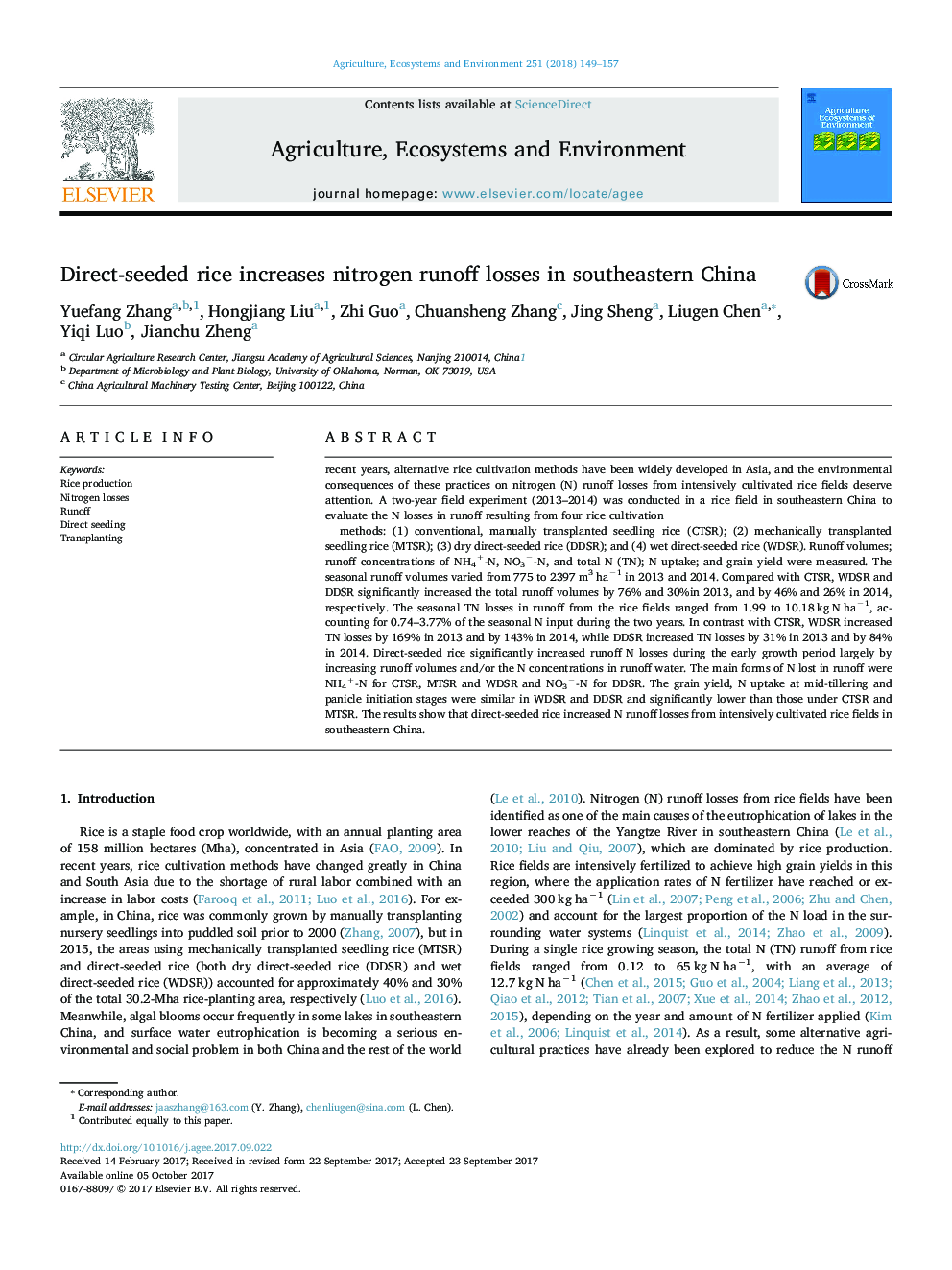| Article ID | Journal | Published Year | Pages | File Type |
|---|---|---|---|---|
| 5537784 | Agriculture, Ecosystems & Environment | 2018 | 9 Pages |
Abstract
methods: (1) conventional, manually transplanted seedling rice (CTSR); (2) mechanically transplanted seedling rice (MTSR); (3) dry direct-seeded rice (DDSR); and (4) wet direct-seeded rice (WDSR). Runoff volumes; runoff concentrations of NH4+-N, NO3â-N, and total N (TN); N uptake; and grain yield were measured. The seasonal runoff volumes varied from 775 to 2397 m3 haâ1 in 2013 and 2014. Compared with CTSR, WDSR and DDSR significantly increased the total runoff volumes by 76% and 30%in 2013, and by 46% and 26% in 2014, respectively. The seasonal TN losses in runoff from the rice fields ranged from 1.99 to 10.18 kg N haâ1, accounting for 0.74-3.77% of the seasonal N input during the two years. In contrast with CTSR, WDSR increased TN losses by 169% in 2013 and by 143% in 2014, while DDSR increased TN losses by 31% in 2013 and by 84% in 2014. Direct-seeded rice significantly increased runoff N losses during the early growth period largely by increasing runoff volumes and/or the N concentrations in runoff water. The main forms of N lost in runoff were NH4+-N for CTSR, MTSR and WDSR and NO3â-N for DDSR. The grain yield, N uptake at mid-tillering and panicle initiation stages were similar in WDSR and DDSR and significantly lower than those under CTSR and MTSR. The results show that direct-seeded rice increased N runoff losses from intensively cultivated rice fields in southeastern China.
Related Topics
Life Sciences
Agricultural and Biological Sciences
Agronomy and Crop Science
Authors
Yuefang Zhang, Hongjiang Liu, Zhi Guo, Chuansheng Zhang, Jing Sheng, Liugen Chen, Yiqi Luo, Jianchu Zheng,
